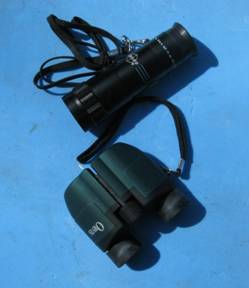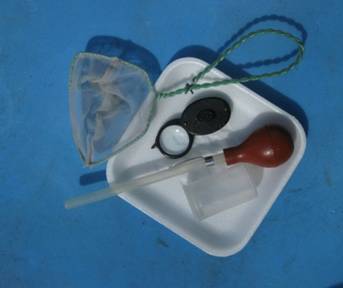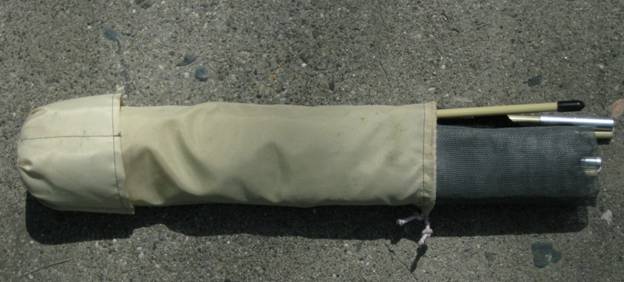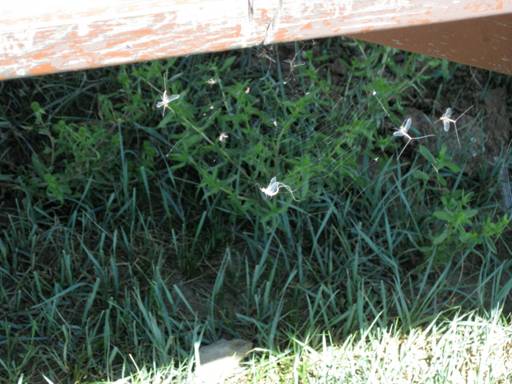AIDS TO OBSERVATION
Often in this column I have written about the importance of observation as a key to successful fly-fishing. While most of my writing is slanted toward trout fishing I have fished for a variety of different species and I believe that observation is just as much a key to catching other species, both fresh and saltwater, as it is in catching trout. While you might be looking for different things when fishing for freshwater bass or snook in the salt I am firmly convinced that the observant angler is the more successful angler.
The most valuable aid to observation is your eyes. This may seem obvious but too many anglers turn to mechanical means before they use the tools God gave them. For years I have taught beginning bird watching classes and the first thing that happens when a beginner sees a bird is that they reach for their field guide. By the time they get the book out the bird has flown away and they don’t have a clue as to what the bird looked like. My advice; spend as much time as possible looking at the bird and, if after you have thoroughly studied the bird you still don’t know what it is, then turn to the field guide. I offer similar advice to fly-fishers; take time to look before you tie on that fly or resort to other means to figure out what’s happening in the water in front of you.

Monocular & Mini-binoculars
One tool that can enhance your ability to see what’s happening on the water is a pair of binoculars or a monocular. Over the years I have owned both items, but a few years ago I purchased a Swift monocular that also doubles as a field microscope. I have often used it when I’m floating and fishing. It allows me to scan the water to discover rising fish that may be on the other side of the river or lake where I am fishing. It’s small enough to fit in an inside pocket on my vest and it has a lanyard on to keep it secure. It also allows me to carefully observe feeding fish from a distance thus avoiding the need of getting too close and spooking them.

Aquarium net, magnifier, stomach pump, vial and small white tray
One of the most important items in my vest is a small aquarium net. You can pick one of these up at any pet shop that sells fish, or you can make one from a coat hanger and some fine mesh material. With this small net I can sample whatever is drifting in the current. When I encounter a fish that ignores all my best imitations I resort to my aquarium net. If I can get directly downstream from my quarry without spooking it I stick my net in the water and see what I come up with. This technique has saved the day on more than one occasion.
There are a couple other items that will be useful in combination with the aquarium net; a small magnifier and a small flat dish. The magnifier is useful when you are examining small insects like midges and a small flat dish, preferably white, provides a handy place to examine your catch.

Portable Kick Seine
If you want to go beyond the aquarium net you should consider a small kick seine. I have one that folds up and fits in a case. If you don’t want to go to the bother of carrying a seine you can turn over rocks and examine aquatic weeds to see what types of nymphs are available to the fish.
One final piece of equipment is handy but it requires that you catch a fish before you can use it. A stomach pump provides a quick and easy way to see what the fish are eating. If you are going to use a stomach pump make certain that you know how to use it correctly.

Spider web with Callibaetis Mayflies
Aside from the things that you find in the water you can out what has been happening recently by examining spider webs that you find near the water. If there has been a recent hatch you will often find the evidence in the web of the spider.
I am a birder and a Federal bird bander so I am always interested in the activities of the birds that I see along the stream or lake where I am fishing. However, I have come to know that birds often reveal things that I have failed to notice. Birds, like swallows and other insect eating birds, will begin to congregate over the water when insects are hatching or when spinners are beginning to gather. Often the birds will indicate that the insects are present even when we cannot see them yet.
Observation begins from the time you arrive at the location where you are planning to fish. Some of it is casual, just being aware of what is happening around you, and some of it is focused on a particular fish. Use the tools God gave you and augment them with the tools that I have suggested. It will make a significant difference in both the quality and the success of your day on the water.
